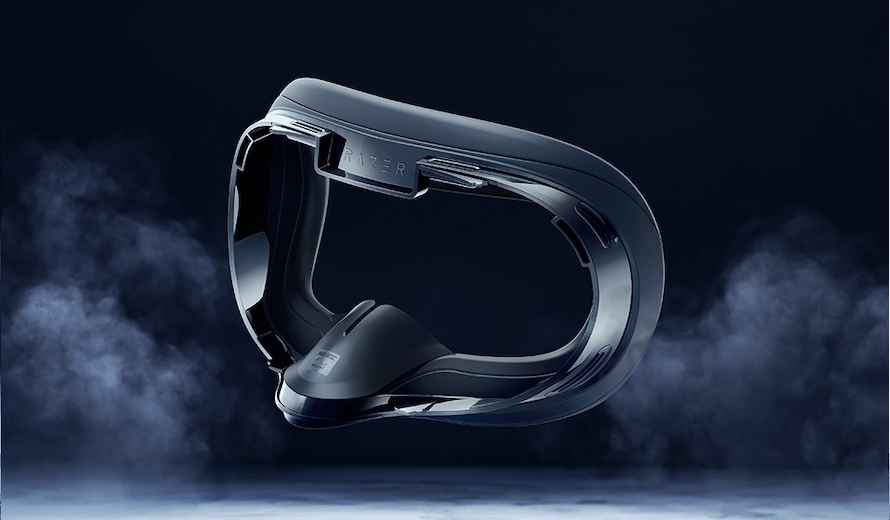Razer Adjustable Head Strap System and Facial Interface Review
Hey, it’s no secret that VR gaming can be uncomfortable after a while. I love my Meta Quest 2, but wearing it on my head for four-hour stretches of gaming takes a physical toll. I think a lot of us have come to accept this reality — you’ve got a big unit strapped to your head and pressing against your face; a mild headache and a pair of “raccoon eyes” are an unavoidable result.
Or are they? If Razer has their way, maybe not. Enter their Adjustable Head Strap System and Facial Interface, two accessories that aim to reduce the physical wear-and-tear brought by extended Meta Quest 2 sessions. I’ve had the chance to try these two pieces of gear out. And while I’m not sure I need both of these pieces of gear in my life, there’s no doubt that they do make a difference.
A Balanced Experience
First, let’s talk about the Razer Adjustable Head Strap System. It’s made of a nice, stretchy material that feels quality. It fits well on your head, snugly but never digging into your scalp like the Quest 2’s built-in band sometimes does. When it’s all set up and on your head, you notice a difference right away. It balances the headset much better. The original band makes the unit feel to me like it’s “holding on” to the back of my head, with most of the weight resting on the front. With the Razer Adjustable Head Strap System, the Quest 2’s weight is more evenly distributed, so it rests on your head.

At first, this actually feels odd. It is very light, much lighter than I’ve gotten accustomed to with the Quest 2 up until now. Without that pressure I was used to, I had a precarious feeling, like the headset maybe wouldn’t stay on, especially if I moved vigorously. But after a while, I got used to the new lighter feeling. I began to realize that the Razer head strap had an equally good grip; but now without my Quest 2 digging into the back if head to secure the front. And it seemed to stay on pretty well, despite my worries at first.
Razer Close
As for the Interface, it’s a replacement for the Quest 2’s own face padding. It’s made to conform to the shape of your face better and thus make for a more comfortable feeling. It means less light will supposedly leak in from the sides as well. As for the latter aspect, the Facial Interface does indeed deliver. I noticed no light coming in from the sides of the Interface, so the Quest 2’s screen was thus brighter and I had less visual distraction when playing. With that reduced gap, there was also a clearer, closer view of the lenses, since the Facial Interface is a bit thinner than the native headset padding.

The rubber padding of the Interface does improve comfort. The Quest 2 was not pressing against my face nearly so much. Pressure is more evenly distributed, especially on my cheek bones. But mind you, that close, soft fit is a double-edged sword. With the lack of a gap around the Facial Interface, I got hotter and sweatier a bit faster than usual. I had almost come to like the gap in my original headset. It was a kind of “vent” to allow air flow inside the viewing area. The Razer Facial Interface seals the gaps but also seems to seal in the heat and moisture. I found myself having to quit or take breaks more often as a result.
Final Verdict
Overall, my verdict is mixed on the Adjustable Head Strap System and Facial Interface. The head strap is an improvement on the Quest 2’s own strap. It’s lighter and more balanced, and it feels better to wear (after a period of getting used to it). The Facial Interface, though, is something that might not be for everyone. If you want a much closer, more snug seal on your face when using your Quest 2, then you’ll like it. But if you’re like me, you might find it a bit too effective.
We’ve got to also consider the price here. Both together can be bought for $139.98 US, or you can get them individually for $69.99 US each. That’s a bit pricey if you’re not really feeling a need to upgrade your Quest 2 already. No matter what though, I can say this about these two Razer accessories: they both indeed make a noticeable difference. And If you are among those looking for an upgrade to your Meta Quest 2’s ergonomics, they might be what you’re looking for.
** Accessories provided for review by the manufacturer **
The Good
- Strap is comfortable and balanced
- Facial Interface blocks out light
The Bad
- Facial Interface can be too snug

